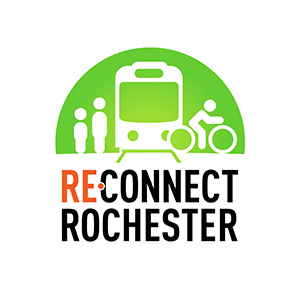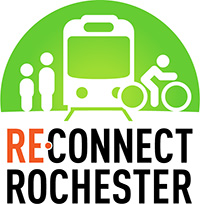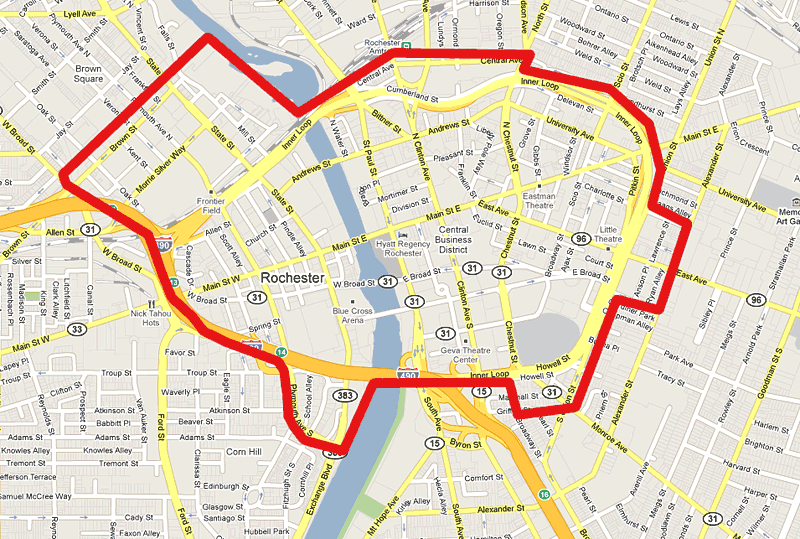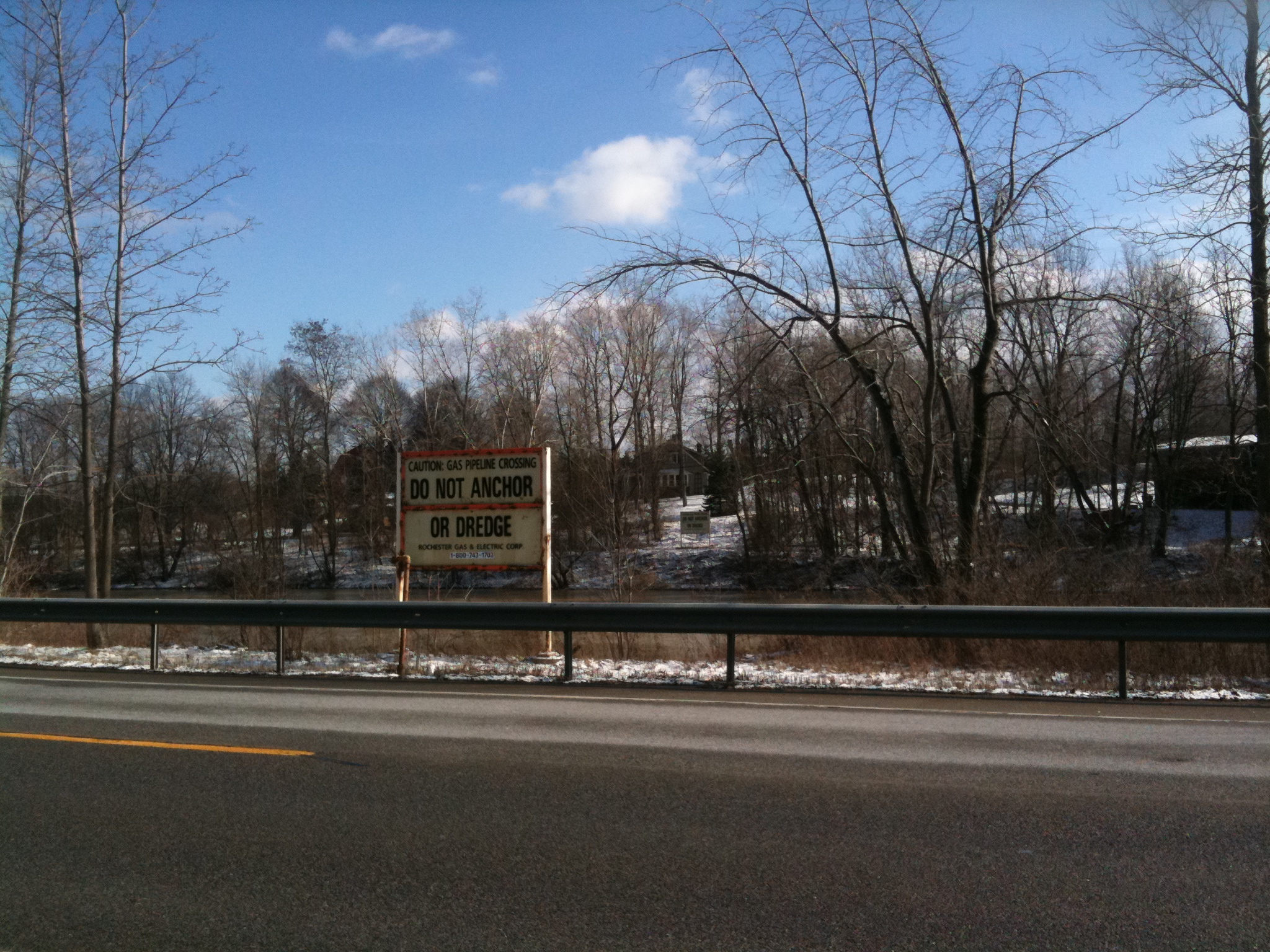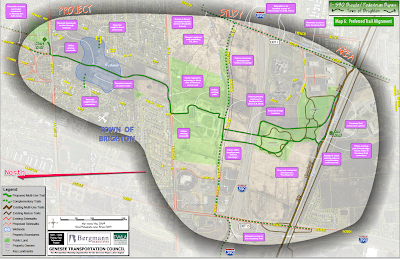NY-PA trail blends recreation, conservation
By PATRICK DONLIN – pdonlin@sungazette.com
POSTED: February 21, 2010
When they decided they had a common interest of creating recreational trails, two professors determined it was time to band together with one another and others to blaze a 230-mile path connecting Williamsport and Rochester, N.Y.
Jon Schull, Rochester Institute of Technology associate professor of innovation and invention, said he and Allen Kerkeslager met a couple months ago in Philadelphia, where Kerkeslager is a professor at St. Joseph’s University.
“We talked about the synergy between his (Kerkeslager’s) work in the Genesee Wilds Association and my work which I call the ‘Rochester Greenway,’ ” Schull said. “We realized the two sections we had been focusing on were the two end points of this project.”
Schull, one of the founders of the Rochester Cycling Alliance, is excited about the recreation possibilities.
Kerkeslager described different reasons he wants to get involved. He grew up in rural New York, near the proposed trail project, and continues to go home to see family there, driving through Williamsport on the way.
The trail project also is a chance for Kerkeslager, a religions of the ancient world professor, to delve into something he admits isn’t as obscure.
‘A breather … for humanity’
“Much of this (trail project) is a breather to do stuff for humanity,” he said.
It comes with a price.
Kerkeslager said the cost for the 230-mile connection could be $100 million, but he offered an explanation.
To offer it completely with trails, he expects a $50 million expense.
There would be another cost of $50 million for the water conservation measures he recommends.
It’ll take time, too, as Kerkeslager said, “Twenty years, I think that’s a fair estimate to be completely off-road.”
Kerkeslager, who rides a bicycle 10 miles round trip on his daily work commute, said he’s a proponent of the proposed cycling recreation.
Environmental improvements
But, he’s also an advocate for environmental improvements possible through the trail plan.
The project spans the Susquehanna, Genesee and the headwaters of the Allegheny River, all watersheds Kerkeslager intends to protect.
Kerkeslager believes building a riparian buffer along the trail is a cost-saving conservation alternative to building expensive rock wall dams.
Greenway planning preserves forests and conserves nature, according to Rick Biery, regional planning program manager for Northern Tier Regional Planning and Development Commission.
Biery embraces plan development and the possible trail if it’s conducted responsibly.
“From a concept standpoint, these things are great,” Biery said. “It brings an opportunity to tap into a resource hikers and bikers may not get to go through unless we look at the possibilities.”
Through connectivity, the recreational system experience improves, according to Kerkeslager.
He said it will connect the nationally renowned Pine Creek Gorge bicycle trail to the Genesee River’s gorgeous waterfalls.
Jobs will be created, Kerkeslager added, especially in the sectors of tourism, hospitality, recreation and tour guiding.
He intends to bring the plan to the forefront at meetings of the Northcentral Pennsylvania Regional Planning and Development Commission in Ridgway.
Facing up to the challenge
Some consider the most challenging interstate link to be completed as a 40-mile proposed trail running northwest from Wellsboro to the New York border.
A connection just west of Wellsboro is in the conceptual stage, according to Biery.
“We’re working with a consultant to develop a greenways open space outdoors recreation plan. It’s an overall concept plan,” he said.
Matt Marusiak, project coordinator for the Northcentral Pennsylvania Greenways and Open Space Plan, said land deals still need to be made there to acquire trail property, much of which lack old railroad beds ideal for making recreation trails.
In areas where land can’t be bought, Kerkeslager said the trail may have to go along Route 6.
Railroad beds ideal
A recreational trail using a road area isn’t uncommon, as Kerkeslager said portions of the Appalachian Trail he’s explored are the same way.
Railroad beds like what are used in the local Pine Creek Trail are ideal, but alternatives can be used if necessary.
Kerkeslager said there’s often a section here and there where planners have to route a trail along roads where landowners want to keep their property or where an area is undevelopable.
Since July, Biery’s been involved in what he described as an outreach process including public meetings, contact with stakeholders, and thousands of resident surveys in the counties of Tioga, Sullivan, Wyoming and Susquehanna.
Biery hopes to reach the next goal by early June, which includes a direct recommendations document he said is drafted for review by the planning partners.
“That’s where projects will come from,” Biery said of further details to be unveiled.
Project offerings
Bicycle recreation is important but so is waterways enjoyment, organizers say.
Like the canoe and kayak launches already offe
red along the Genesee and Pine Creek rail trails, Kerkeslager plans on offering more boat launches where possible.
He hopes his entire New York to Pennsylvania circuit can be as beautiful as the Pine Creek trail residents enjoy here, but he realizes some adjustments may be necessary.
A hurdle in New York is not to have a trail, but to have it off-road.
A 20-mile section from Belfast, N.Y., to Wellsville, N.Y., can be offered as soon as this summer if it’s presented on an existing country road.
“In the long run, we’d like to get these trails off the roads entirely,” Kerkeslager said.
Using a combination of existing roads and trails, he said a route from Williamsport to New York could be offered later this year.
Organizers would merely have to offer maps, a Web site and post some trail sections with markers honoring the trail.
“It could say future home of (the NYPA Greenways),” Kerkeslager said, reminding it’s only a working name.
“To open for usage with provisional usage on roads, we can do that as soon as it gets warm,” he said.
People already bicycle from Rochester to Williamsport, according to Schull.
“They ride on trails and ride on roads when the trail peters out,” he said.
It can be done now, but Lycoming County Visitors Bureau Executive Director Jason Fink doesn’t suggest competing with traffic along the Route 14-15 corridors.
‘A safer way’
“This would be a safer way to enjoy it,” said Fink, himself an avid local bicycle rider. “To ride up to Rochester would be a very exciting thing for a bicyclist.”
Because the existing Pine Creek Trail is extensively used, he believes a new trail would be popular around here.
It would be quite an experience to explore a different terrain in the Great Lakes region up north, according to Fink.
The trail is more than just about recreation to Schull, who said, “it becomes a plan for real development and transportation development.”
He said bicycling is especially popular among the five cycling clubs in his city.
Schull said there are great places to ride around the Erie Canal, Genesee Riverway Trail, Lake Ontario and Finger Lakes. He said his region already had wonderful trails but they can be improved.
“There are stretches where there’s roads that we ride that could be more bikeable,” Schull said. “And there’s stretches that could be more scenic or more direct.”
Extending their outreach
Attracting expanded stakeholders interested in conservation is critical to success, according to Kerkeslager.
“With more interest in the trail, we’ll expand the profile,” he said. “Get people using it and once they’re using it, it promotes more stakeholders to build up funding.”
“If there’s enough support out there, the right people should be able to find those funds out there,” Fink said of needed grants.
Separate but similar projects are happening elsewhere, as Schull said a national network of trails is developing.
“There’s an emerging view of greenways all over the country,” he said.
The East Coast Greenway project from Cape Cod to Key West, Fla., is being developed along a proposed 3,000-mile trail, which runs down the eastern seaboard, incorporating the Philadelphia area.
In addition to his planning involvement with the Pennsylvania Wilds, Jerry Walls also is a board member of the Susquehanna Greenway Partnership, which he said may benefit from the NYPA plan.
From the headwaters of the West Branch in Cambria County to Williamsport to Sunbury to the Chesapeake Bay, Susquehanna Greenway partners including Walls are planning a 500-mile recreational route that he said could tie into Kerkeslager’s plan.
